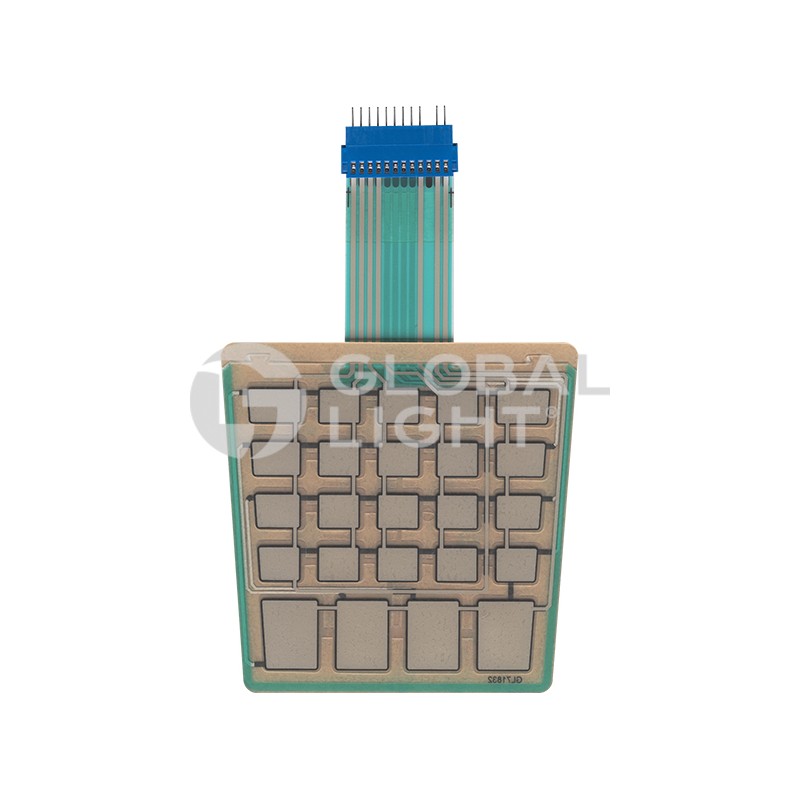How Membrane Switch Technology is Revolutionizing User Interfaces
How Membrane Switch Technology is Revolutionizing User Interfaces
Blog Article
Understanding Membrane Layer Switches: The Secret to Reputable and sturdy Controls

What Are Membrane Buttons?
Membrane layer switches are an advanced remedy in the realm of customer interface modern technology, combining functionality and design perfectly. These gadgets offer as a user interface in between customers and digital systems, incorporating numerous parts right into a compact format. Generally built from versatile, thin layers of products, membrane layer buttons are made to react to touch, enabling users to interact with machinery and electronic gadgets properly.
The primary aspects of a membrane switch consist of a printed circuit layer, graphic overlay, and a spacer layer that avoids unexpected activation. The visuals overlay can be personalized to show brand identity or user preferences, boosting aesthetic appeals while making certain functionality. Membrane switches are generally made use of in different applications, consisting of clinical tools, customer electronics, and commercial tools, owing to their resilience and resistance to ecological variables such as moisture and dirt.
Among the essential advantages of membrane layer switches is their capability to endure wear and tear, making them ideal for high-traffic settings. Furthermore, they are lightweight and call for minimal room, enabling for innovative layouts in product growth. Generally, membrane switches over represent a sensible and effective choice for modern-day electronic user interfaces, marrying innovation with user-centric design concepts.
How Membrane Switches Over Job
The procedure of membrane switches hinges on a basic yet reliable mechanism that equates individual input right into electronic signals. When an individual presses the button, the leading layer flaws, allowing a conductive aspect in the circuit layer to make call with an equivalent conductive pad on the underside of the graphic overlay.
The layout of membrane layer switches can vary, but they usually incorporate domes or tactile elements to offer comments to the individual, boosting the total experience - membrane switch. The products made use of in membrane layer buttons, such as polyester or polycarbonate, add to their sturdiness and resistance to ecological aspects, consisting of dampness and dirt. In addition, the published circuits are commonly enveloped, which protects them from wear and tear over time.
Benefits of Membrane Switches

Furthermore, membrane switches are understood for their durability. Constructed from robust materials, they are resistant to dust, moisture, and physical wear, which considerably extends their life expectancy compared to conventional mechanical switches. This sturdiness makes them especially appropriate for high-traffic atmospheres and applications needing durability.
One more considerable benefit is the ease of cleaning and maintenance. The smooth surface area of membrane layer switches over lessens dirt buildup and is commonly resistant to spills, making them excellent for setups that need regular sanitization.
Additionally, membrane switches offer a streamlined account, bring about a thinner style that can be integrated into numerous gadgets without adding bulk. This you can try these out attribute not only enhances the aesthetic appeal but additionally adds to a much more ergonomic product layout.
Applications of Membrane Layer Switches
Functional and straightforward, membrane layer switches find applications throughout a variety of sectors, including clinical gadgets, consumer electronic devices, and industrial tools. In the clinical field, these buttons are essential to tools such as diagnostic equipment, individual monitoring systems, and mixture pumps, where dependability and ease of cleansing weblink are vital. Their capacity to stand up to harsh settings and maintain capability makes them suitable for such applications.

In customer electronics, membrane buttons are used in products like microwaves, cleaning machines, and remotes - membrane switch. Their smooth layout enables intuitive individual interfaces, boosting the overall individual experience while giving sturdiness and resistance to deterioration
Industrial devices likewise takes advantage of membrane layer switches, especially in control panels for equipment and automation systems. These buttons supply protection against dust and wetness, making certain consistent performance in difficult atmospheres. In addition, their personalized features allow producers to tailor them to certain functional demands, boosting efficiency and functionality.
Selecting the Right Membrane Change
When choosing a membrane switch, it is necessary to take into consideration various elements that influence efficiency and suitability for details applications. The main considerations include environmental problems, responsive comments, toughness, and style specs.
First, evaluate the operating environment; buttons revealed to wetness, chemicals, or extreme temperatures call for certain materials to guarantee longevity and functionality. Next off, assess the need for responsive responses. Depending upon user communication, some applications might take advantage of a tactile feedback to verify activation, while others might favor a non-tactile style for aesthetic factors.
Toughness is another critical aspect; membrane buttons ought to be designed to stand up to frequent usage, effects, and abrasion. Ensure the picked switch can endure the anticipated lifecycle, particularly in high-usage scenarios.

Final Thought
To conclude, membrane layer switches work as necessary elements in the design of reputable and durable control systems throughout different industries. Their small design, incorporated with robust building and construction and adjustable features, boosts user communication while guaranteeing longevity popular environments. The convenience of membrane switches over enables for customized services that meet certain operational demands, reinforcing their significance in contemporary innovation. As sectors remain to evolve, the value of integrating reliable membrane layer switch remedies can not be overemphasized.
Membrane switches stand for a vital facet of modern interface YOURURL.com layout, blending capability with resilience in various applications.Membrane switches are an advanced option in the world of individual interface modern technology, incorporating functionality and design perfectly. Normally created from adaptable, slim layers of products, membrane layer switches are developed to respond to touch, allowing individuals to communicate with machinery and electronic devices effectively.
The design of membrane switches can differ, yet they often incorporate domes or responsive components to give responses to the customer, improving the general experience.In final thought, membrane switches serve as vital components in the design of trustworthy and long lasting control systems across various industries.
Report this page